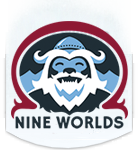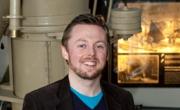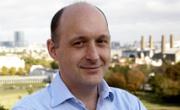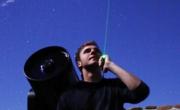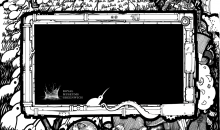
Astronomers and curators from the National Maritime Museum and the Royal Observatory Greenwich will be running lectures and demonstrations for geeks of all ages, themed around the current special exhibitions running in Greenwich: "Ships, Clocks and Stars: The Quest for Longitude" on navigation at sea; "Stars to Satellites" on the history of satellite navigation; and "Longitude Punk'd", a steampunk showcase of fantastical inventions alongside historical artefacts.
Talks and Workshops
These will run all day on Friday, in Room 12 of the Radisson.
Photographing the Universe - with Dr. Marek Kukula, Public Astronomer
10am - 11.15am
Technology and astronomy have always gone hand in hand, with advances in astronomical instruments revealing ever more astonishing views of the cosmos, while new scientific ideas and theories drive the development of ever more powerful tools for testing them. The revolutionary impact of the telescope on astronomy is a familiar story, but few people know how much photography and astronomy have influenced each other over the last two hundred years. From early drawings to the latest high-resolution digital images and from pin-hole cameras to the latest electronic detectors, this talk explores astronomy’s long association with photography taking in science, technology, art and history on the way.
The Longitude Story: From Projectors To Punks - with Dr. Richard Dunn, Senior Curator For The History Of Science, curator for the exhibitions ‘Ships, Clocks & Stars’ & ‘Longitude Punk’d’
11.45am - 1.00pm
The Longitude Season at the Royal Observatory and National Maritime Museum is celebrating the 300th anniversary of the 1714 Longitude Act with a series of exhibitions, events and planetarium shows. The Longitude Act famously offered life-changing rewards to anyone who could solve the ‘unsolvable’: finding a ship's position at sea. Successful ideas came forward eventually, but hundreds of other projects proved to be dead ends. Richard Dunn, who has helped put the Season together, will look back at the miscellany of schemes sent to the Board of Longitude, thinking about the extent to which they were crazy (or not) and how they have inspired steampunk artists today. We’ll explore some of the schemes that didn’t work but could today, and think about innovation and the difficult process of getting inventions made in the Age of Enlightenment.
Build Your Own Spectroscope - with Brendan Owens, Astronomy Programmes Officer
1.30pm - 2.45pm
Spectroscopes are vital in studying astronomical phenomena. In this interactive workshop, we'll build our own spectroscopes, play with discharge tubes, and learn about how astronomers can study the composition of distant astronomical bodies.
Do Black Holes Really Exist? - with Dr. Marek Kukula
3.15pm - 4.30pm
Black holes are one of the most exotic predictions of theoretical physics and debate still rages about the ultimate fate of the material which falls into them. But do black holes really exist, and if so how and where should we look for them? This talk describes the latest astronomical evidence for black holes in our own galaxy and beyond.
Travellers of the Fourth Dimension: the secrets of time travel - with Brendan Owens
5pm - 6.15pm
In the classic George Pal production of H.G. Wells’ The Time Machine, a turn-of-the-century inventor has created the titular device to investigate the future of mankind. In this talk we will explore together the secrets of the fourth dimension and take the glorious steampunk Time Machine in for a service to fit it with our latest understanding of time and space. Ultimately we’ll ask the question – is time travel really possible?!
Steampunk Telescopes - with Tom Kerss, Planetarium Astronomer and Observing Expert
6.45pm - 8pm
A talk on the golden age of giant Victorian refractors, including the Observatory's own 28”, and many others around the world. This talk will consider: what would the Universe look like to us if we still relied on this technology today? What could have been theoretically possible within the realm of giant refractors? Could we have built and launched a space telescope like Hubble using steampunk rules? We'll also have a look at examples of historical telescopes - many of which, such as the Paris Exhibition Telescope from 1900, already have a great steampunk aesthetic!
Speakers
Dr. Marek Kukula is Public Astronomer at the Royal Observatory Greenwich, where he helps ensure that the Royal Observatory’s exhibitions, talks and planetarium shows accurately reflect the latest findings in astronomy, and explains new discoveries in space to the public and press.
Dr. Richard Dunn is Head of Science and Technology at Royal Museums Greenwich. He is co-curator of Ships, Clocks & Stars: The Quest for Longitude, a major exhibition at the National Maritime Museum (www.rmg.co.uk/longitude). He is also working on the history of the Board of Longitude in collaboration with the Department of History and Philosophy of Science, University of Cambridge. His publications include The Telescope: A Short History (2009) and Finding Longitude (2014, with Rebekah Higgitt).
Brendan Owens is Astronomy Programmes Officer at the Royal Observatory Greenwich. As one of the astronomers at the Observatory, he presents planetarium shows, develops and presents schools workshops, looks after the operation of the largest lensed telescope in the UK and also frequently talks about science fact versus science fiction. He holds a B.Sc. in Physics and Astronomy and an M.Sc. in Science Communication both from Dublin City University and has worked on projects regarding Solar Physics.
Tom Kerss is a professional astronomer at the Royal Observatory Greenwich. A keen stargazer and astrophotographer, he spends his days (and nights) communicating astronomy to students and the public, chasing clear skies, and dreaming about the countless undiscovered worlds in our heart-stirring, breath-taking universe.
